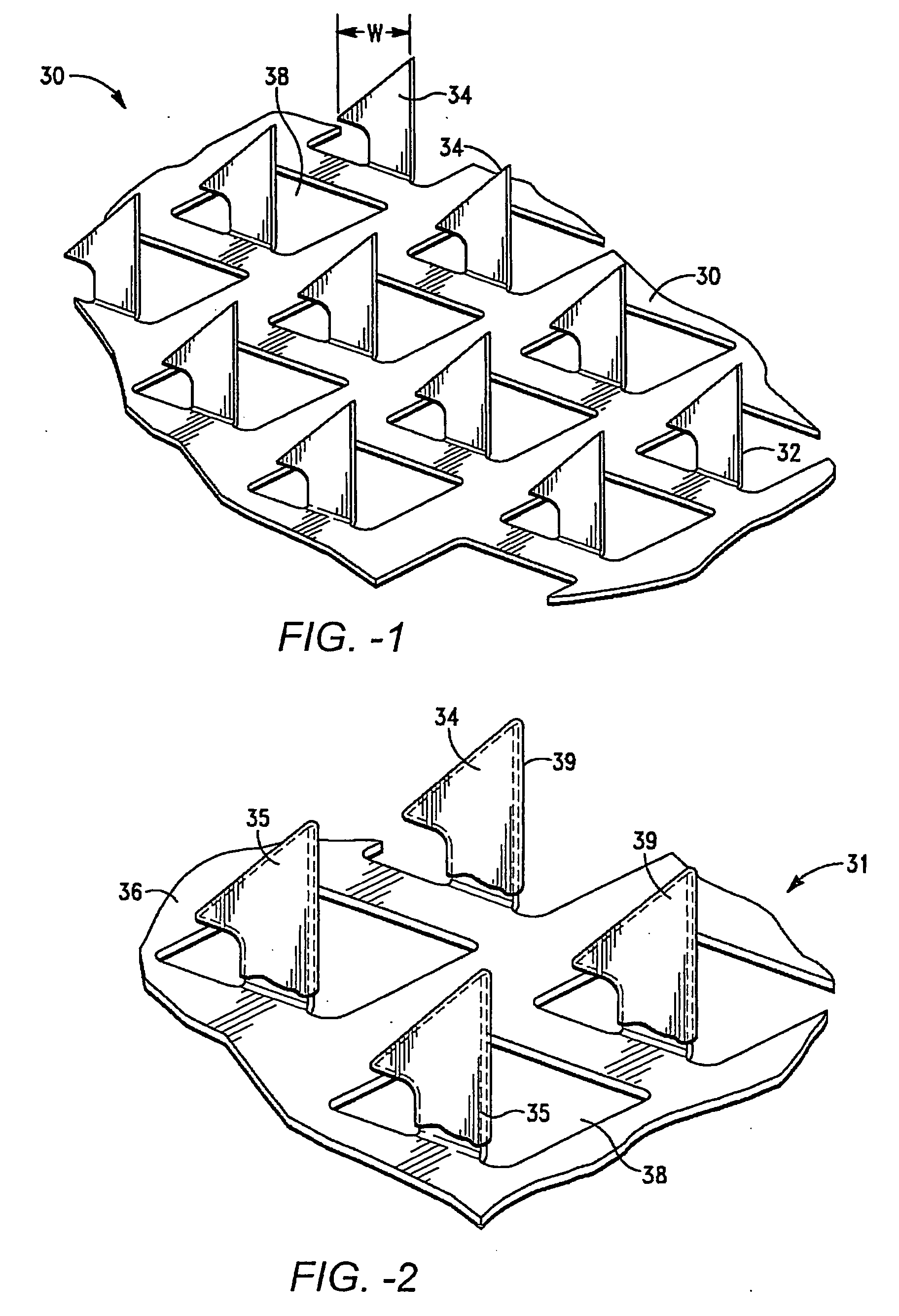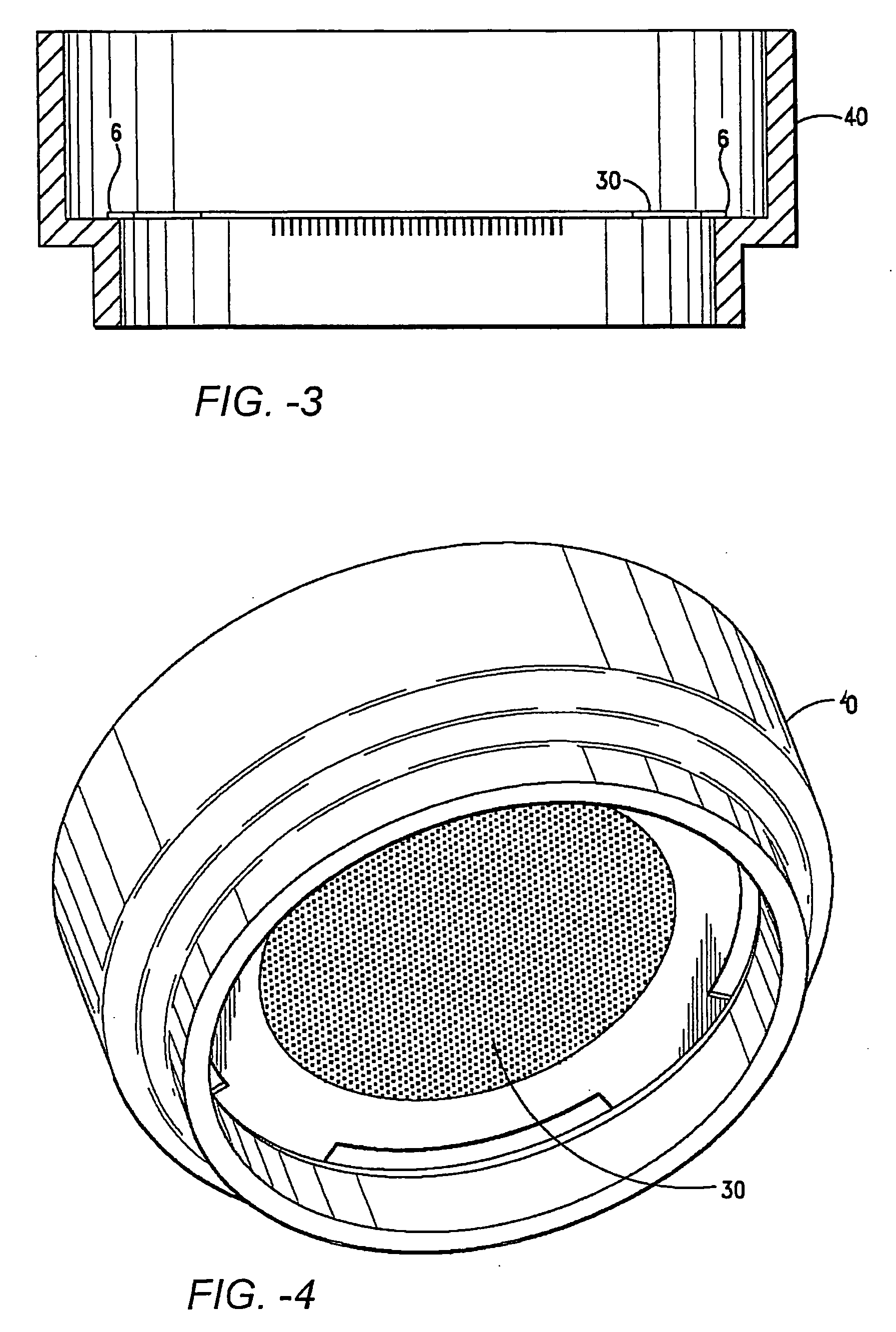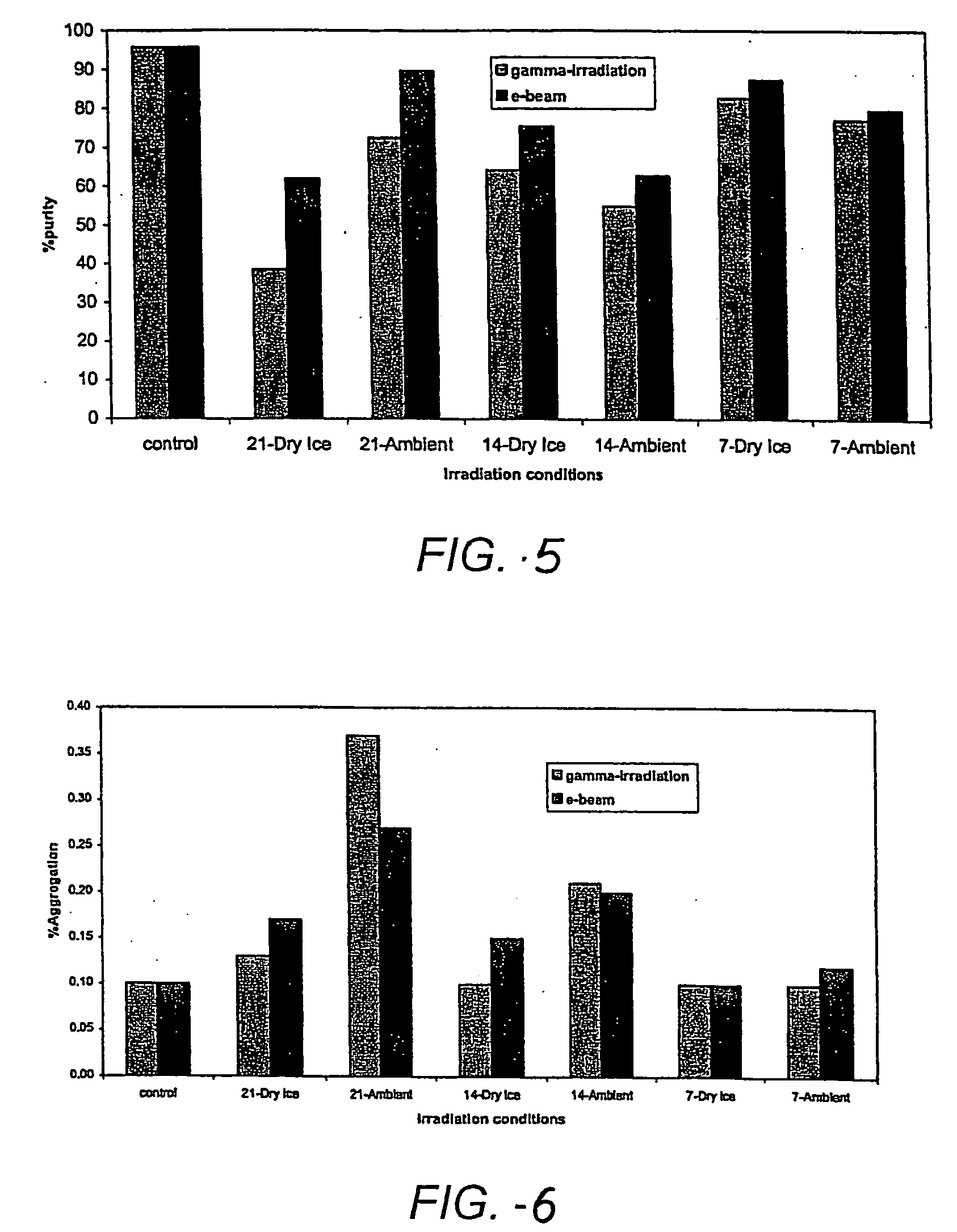Method for terminal sterilization of transdermal delivery devices
a transdermal device and terminal technology, applied in the directions of packaging sterilisation, disinfection, transportation and packaging, etc., can solve the problems of high patient morbidity and mortality, poor patient compliance, active bone resorption, etc., and achieve the effect of reducing the moisture content inside the packaging
- Summary
- Abstract
- Description
- Claims
- Application Information
AI Technical Summary
Benefits of technology
Problems solved by technology
Method used
Image
Examples
example 1
[0141] Validation reverse-phase and size-exclusion high pressure liquid chromatography (RP-HPLC and SEC-HPLC, respectively) were used to quantify PTH oxidation resulting from exposure to the sterilizing radiation. Formulations of hPTH(1-34) were prepared, comprising 20% w / w HPTH, 20% sucrose, 0.2% polysorbate 20 and 0.03% EDTA. The PTH formulations were coated onto microprojection arrays, which were then enclosed in glass vials. The coated arrays were irradiated with 7, 14 or 21 kGy radiation doses, from either gamma radiation or e-beam, under dry ice or an ambient temperature. As shown in FIG. 5, both gamma radiation and e-beam exposure decreased the purity of PTH relative to a control formulation. Tables 1 and 2 give the data corresponding to the purity and degradation products for gamma radiation and e-beam, respectively.
TABLE 1IrradiationPTH(1-34)OxidationTotalOtherConditionsPurityRRTOxidationimpuritiesLot No.Gamma(%)0.270.510.65(%)RRTAggregation7822-90-1None95.70.060.261.01.4...
example 2
[0146] Formulations of hPTH(1-34) were prepared as set forth in Example 1, and coated on microprojection arrays. In addition to the standard 1:1 sucrose:hPTH formulations discussed above, the effect of antioxidants was assessed by adding to selected samples 5% w / w methionine or 3.3% w / w ascorbic acid. The coated arrays were placed in nitrogen purged heat-sealed foil pouches or glass vials. Also, one of the samples was subjected to ethylene oxide sterilization as a comparison. The remaining samples were subjected to dose of gamma radiation of either 7, 14 or 21 kGy under dry ice or an ambient temperature. As discussed above, the purity and degradation of the PTH formulations was assessed using RP-HPLC and SEC-HPLC. Table 3 summarizes the irradiation protocol.
TABLE 3GammairradiationDose (kGy)Lot. No.ConditionsPackagingAntioxidant7142124AShippingPouchNoControls24BDry IcePouchNoX24CDry IcePouchNoX24DShippingGlass VialNoControls24EAmbientGlass VialNoXTemperature25AEthylene OxideGlass V...
example 3
[0149] Formulations of hPTH(1-34) were prepared as set forth in Example 1, and coated on microprojection arrays. Certain arrays were assembled with a polycarbonate retainer ring and an adhesive. The arrays were sealed in foil pouches purged with nitrogen or ambient air or in glass vials. The arrays were exposed to 14 or 21 kGy of gamma radiation under dry ice or an ambient temperature. As discussed above, the purity and degradation of the PTH formulations was assessed using RP-HPLC and SEC-HPLC.
[0150] As shown in FIG. 9, the coated arrays irradiated at 21 kGy while packaged inside a nitrogen purged foil pouch did not suffer a significant loss in purity relative to the control. There was a less than 4% increase in overall oxidation at an ambient temperature and a less than 2% increase under dry ice. Thus, an hPTH(1-34) coated microprojection array is terminally sterilizable using gamma irradiation.
[0151]FIG. 10 illustrates the effect of packaging by comparing coated arrays irradiat...
PUM
| Property | Measurement | Unit |
|---|---|---|
| temperature | aaaaa | aaaaa |
| microprojection thickness | aaaaa | aaaaa |
| microprojection length | aaaaa | aaaaa |
Abstract
Description
Claims
Application Information
 Login to View More
Login to View More - R&D
- Intellectual Property
- Life Sciences
- Materials
- Tech Scout
- Unparalleled Data Quality
- Higher Quality Content
- 60% Fewer Hallucinations
Browse by: Latest US Patents, China's latest patents, Technical Efficacy Thesaurus, Application Domain, Technology Topic, Popular Technical Reports.
© 2025 PatSnap. All rights reserved.Legal|Privacy policy|Modern Slavery Act Transparency Statement|Sitemap|About US| Contact US: help@patsnap.com



